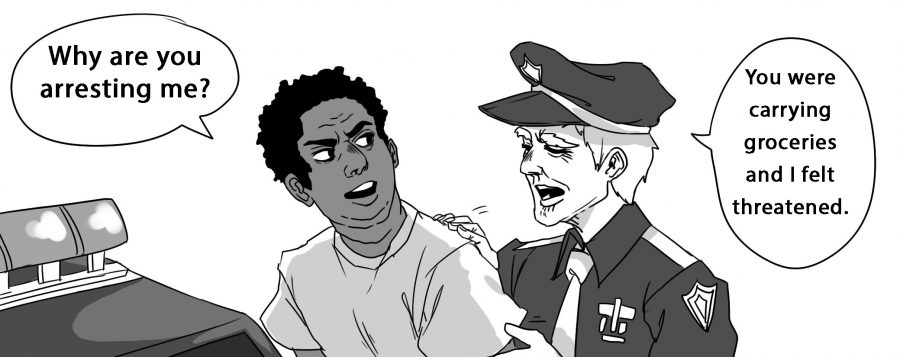Police brutality and racial profiling on rise
October 26, 2016
Blue lives matter or black lives matter?
This question has spread throughout the United States and divided many people. The movements both strive for safety, but with different motives.
Black Lives Matter is an organization addressing racial profiling and police brutality towards black people while Blue Lives Matter is a response to Black Lives Matter.
Police brutality is an issue that is lately being given attention, mostly by social media’s ability to spread footage of incidents.
Videos of police officers using violence against black men such as Philando Castile, a 32-year-old male who was shot and killed; Keith Lamont Scott, a 43-year-old male killed because of parking in a visitor’s space; and Christian Taylor, a 19-year-old also shot by a police, have gone viral.
Many people did not realize the intensity of the racial profiling and violence taking place until these videos and others like them awakened them.
Within Castile’s video, you can see the police officer losing control, overreacting and turning a mild situation into a fatal one, all in front of Castile’s 3-year-old daughter.
These are only three of the many videos that have awakened people to the problem of racial profiling by police and started to trend the hashtag #blacklivesmatter. Blacks Lives Matter is an activist movement with the aim of stopping violence towards people of color.
The Washington Post states that since January 2015, “Police have shot and killed a young black man (ages 18 to 29) — such as Michael Brown in Ferguson, Mo. —175 times.”
But this issue has caused violence and riots towards police officers.
From the hashtag #blacklivesmatter came the hashtag #bluelivesmatter, a hashtag aimed to support police. The hashtag #bluelivesmatter caused an Internet uproar, with claims that it’s a racist hashtag that’s based in white privilege.
Blue Lives Matter is not meant to address the issue of violence towards blacks. Its idea is to support the police and their lives, which some see as overshadowing Black Lives Matter.
Policing Equity released a study showing that the use of force by police against black people is 3.6 times as high as when force is used with a white person.
As to the issue of police brutality against blacks, the first step should be to train police on how to handle all situations, so they are comfortable and know how to react without easily resorting to firearms or other violence.
Yes, there are many good police officers, but what the nation needs to focus on is fixing the problem by addressing the bad ones.
#Bluelivesmatter supports police, but does not address the issue that #blacklivesmatter has raised; #blacklivesmatter seeks to create equality in how all people are treated by the police.

